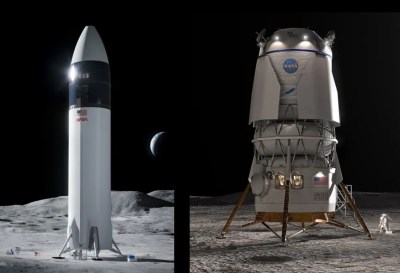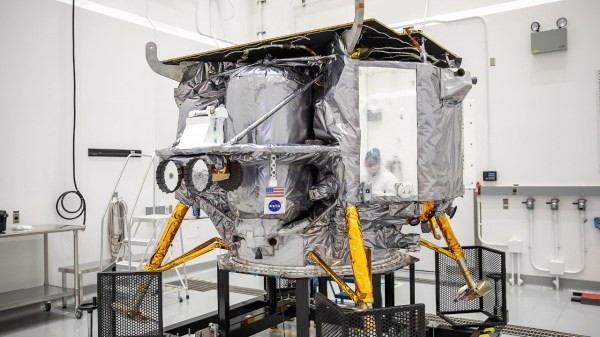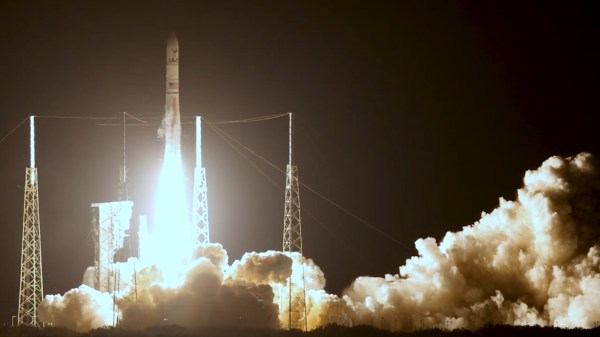When all else fails, blame it on the cloud? It seems like that’s the script for just about every outage that makes the news lately, like the Wyze camera outage this week that kept people from seeing feeds from their cameras for several hours. The outage went so far that some users’ cameras weren’t even showing up in the Wyze app, and there were even reports that some people were seeing thumbnails for cameras they don’t own. That’s troubling, of course, and Wyze seems to have taken action on that quickly by disabling a tab on the app that would potentially have let people tap into camera feeds they had no business seeing. Still, it looks like curiosity got the better of some users, with 1,500 tapping through when notified of motion events and seeing other people walking around inside unknown houses. The problem was resolved quickly, with blame laid on an “AWS partner” even though there were no known AWS issues at the time of the outage. We’ve said it before and we’ll say it again: security cameras, especially mission-critical ones, have no business being connected with anything but Ethernet or coax, and exposing them to the cloud is a really, really bad idea.
Artemis25 Articles
Could Moon Mining Spoil Its Untouched Grandeur And Science Value?
It’s 2024. NASA’s Artemis program is in full swing, and we’re hoping to get back to the surface of the Moon real soon. Astronauts haven’t walked on the beloved sky rock since 1972! A human landing was scheduled for 2025, which has now been pushed back to 2026, and we’re all getting a bit antsy about it. Last time we wanted to go, it only took 8 years!
Now, somehow, it’s harder, but NASA also has its sights set higher. It no longer wants to just toddle about the Moon for a bit to wave at the TV cameras. This time, there’s talk of establishing permanent bases on the Moon, and actually doing useful work, like mining. It’s a tantalizing thought, but what does this mean for the sanctity of one of the last pieces of real estate yet to be spoilt by humans? Researchers are already arguing that we need to move to protect this precious, unique environment.
Continue reading “Could Moon Mining Spoil Its Untouched Grandeur And Science Value?”
Crippled Peregrine Lander To Make Fiery Return Home
Within a few hours of this post going live, Astrobotic’s Peregrine spacecraft is expected to burn up in the Earth’s atmosphere — a disappointing end to a mission that was supposed to put the first US lander on the Moon since the Apollo program ended in 1972.
In their twentieth mission update since Peregrine was carried into space on the inaugural flight of the United Launch Alliance Vulcan Centaur rocket, Astrobotic explains that the craft has been put on a trajectory designed to ensure it breaks up over a remote area of the South Pacific.

It was previously hoped the lander, which suffered a severe system malfunction just hours after liftoff, could have at least made a close pass of the Moon in lieu of touching down. But mission controllers felt the more responsible approach was to have Peregrine make a controlled re-entry while they still had the ability to maneuver it. The alternative, allowing the craft to remain in an uncontrolled orbit between the Earth and Moon, could potentially have caused problems for future Artemis missions.
Over the last ten days, ground controllers at Astrobotic have been working to piece together what happened to the doomed lander, while at the same time demonstrating a remarkable level of transparency by keeping the public informed along the way. It’s now believed that the stream of gas being expelled from a rupture in one of the craft’s propellant tanks was acting as a sort of impromptu thruster. This not only made the craft difficult to keep oriented, but also wasted the propellants that were necessary to perform a soft landing on the lunar surface.
Although the craft was eventually brought under control, the damage to the mission had already been done. While this obviously isn’t the ending that Astrobotic was hoping for, we have no doubt that the company collected valuable data during the craft’s flight through space, which took it approximately 390,000 kilometers (242,000 miles) from Earth.
As for us space nerds, we won’t have to wait long before another lunar lander makes its attempt. Japan’s Smart Lander for Investigating Moon (SLIM) should be touching down at around 10 AM Eastern on Friday (YouTube Live Stream), and the Nova-C lander from Intuitive Machines is scheduled to be launched aboard a Falcon 9 rocket sometime next month.
NASA Adjusts Course On Journey To The Moon
It’s already been more than fifty years since a human last stepped foot on another celestial body, and now that NASA has officially pushed back key elements of their Artemis program, we’re going to be waiting a bit longer before it happens again. What’s a few years compared to half a century?
 The January 9th press conference was billed as a way for NASA Administrator Bill Nelson and other high-ranking officials within the space agency to give the public an update on Artemis. But those who’ve been following the program had already guessed it would end up being the official concession that NASA simply wasn’t ready to send astronauts out for a lunar flyby this year as initially planned. Pushing back this second phase of the Artemis program naturally means delaying the subsequent missions as well, though during the conference it was noted that the Artemis III mission was already dealing with its own technical challenges.
The January 9th press conference was billed as a way for NASA Administrator Bill Nelson and other high-ranking officials within the space agency to give the public an update on Artemis. But those who’ve been following the program had already guessed it would end up being the official concession that NASA simply wasn’t ready to send astronauts out for a lunar flyby this year as initially planned. Pushing back this second phase of the Artemis program naturally means delaying the subsequent missions as well, though during the conference it was noted that the Artemis III mission was already dealing with its own technical challenges.
More than just an acknowledgement of the Artemis delays, the press conference did include details on the specific issues that were holding up the program. In addition several team members were able to share information about the systems and components they’re responsible for, including insight into the hardware that’s already complete and what still needs more development time. Finally, the public was given an update on what NASA’s plans look like after landing on the Moon during the Artemis III mission, including their plans for constructing and utilizing the Lunar Gateway station.
With the understanding that even these latest plans are subject to potential changes or delays over the coming years, let’s take a look at the revised Artemis timeline.
Continue reading “NASA Adjusts Course On Journey To The Moon”
Vulcan Nails First Flight, But Peregrine Falls Short
For those with an interest in the history of spaceflight, January 8th promised to be a pretty exciting day. Those who tuned into the early morning live stream were looking forward to seeing the first flight of the Vulcan Centaur, a completely new heavy-lift booster developed by United Launch Alliance. But as noteworthy as the inaugural mission of a rocket might be under normal circumstances, this one was particularly special as it was carrying Peregrine — set to be the first American spacecraft to set down on the lunar surface since the end of the Apollo program in 1972.
Experience has taught us that spaceflight is hard, and first attempts at it doubly so. The likelihood of both vehicles performing as expected and accomplishing all of their mission goals was fairly remote to begin with, but you’ve got to start somewhere. Even in the event of a complete failure, valuable data is collected and real-world experience is gained.
Now, more than 24 hours later, we’re starting to get that data back and finding out what did and didn’t work. There’s been some disappointment for sure, but when everything is said and done, the needle definitely moved in the right direction.
Continue reading “Vulcan Nails First Flight, But Peregrine Falls Short”
Artemis’ Next Giant Leap: Orbital Refueling
By the end of the decade, NASA’s Artemis program hopes to have placed boots back on the Moon for the first time since 1972. But not for the quick sightseeing jaunts of the Apollo era — the space agency wants to send regular missions made up of international crews down to the lunar surface, where they’ll eventually have permanent living and working facilities.
The goal is to turn the Moon into a scientific outpost, and that requires a payload delivery infrastructure far more capable than the Apollo Lunar Module (LM). NASA asked their commercial partners to design crewed lunar landers that could deliver tens of tons of to the lunar surface, with SpaceX and Blue Origin ultimately being awarded contracts to build and demonstrate their vehicles over the next several years.

At a glance, the two landers would appear to have very little in common. The SpaceX Starship is a sleek, towering rocket that looks like something from a 1950s science fiction film; while the Blue Moon lander utilizes a more conventional design that’s reminiscent of a modernized Apollo LM. The dichotomy is intentional. NASA believes there’s a built-in level of operational redundancy provided by the companies using two very different approaches to solve the same goal. Should one of the landers be delayed or found deficient in some way, the other company’s parallel work would be unaffected.
But despite their differences, both landers do utilize one common technology, and it’s a pretty big one. So big, in fact, that neither lander will be able to touch the Moon until it can be perfected. What’s worse is that, to date, it’s an almost entirely unproven technology that’s never been demonstrated at anywhere near the scale required.
Continue reading “Artemis’ Next Giant Leap: Orbital Refueling”
Italy Proposes Minimalist Lunar Outpost For Artemis
When humanity first step foot on the Moon, they couldn’t stay around for very long. The Apollo program was limited by the technology of the era — given the incredible cost per kilogram to put a payload down on the lunar surface, it wasn’t feasible to bring down enough consumables for a lengthy stay. Even if they could have carried sufficient food and water to last more than a few days, the limiting factor would have become how long the crew could realistically remain cooped up in the tiny Lunar Excursion Module (LEM).
 In comparison, the Artemis program is far more ambitious. NASA wants to establish a long-term, and perhaps even permanent, human presence on our nearest celestial neighbor. This will be made possible, at least in part, to the greatly reduced launch costs offered by current and near-future launch vehicles compared to legacy platforms like the Saturn V or Space Shuttle. But cheaper rides to space is only part of the equation. NASA will also be leaning heavily on the lessons learned during the International Space Program; namely, the advantages of modular design and international cooperation.
In comparison, the Artemis program is far more ambitious. NASA wants to establish a long-term, and perhaps even permanent, human presence on our nearest celestial neighbor. This will be made possible, at least in part, to the greatly reduced launch costs offered by current and near-future launch vehicles compared to legacy platforms like the Saturn V or Space Shuttle. But cheaper rides to space is only part of the equation. NASA will also be leaning heavily on the lessons learned during the International Space Program; namely, the advantages of modular design and international cooperation.
While NASA and their commercial partners will still end up providing the bulk of the hardware for the Artemis program, many modules and components are being provided by other countries. From the Orion’s European Service Module (ESM) to the Japanese life support systems to be installed on the Lunar Gateway Station, America won’t be going to the Moon alone this time.
The latest international contribution to the Artemis program comes from the Italian Space Agency (ASI), who have announced their intention to develop a lunar habitation module they’re calling the Multi-Purpose Habitat (MPH) in collaboration with Thales Alenia Space.
Continue reading “Italy Proposes Minimalist Lunar Outpost For Artemis”


















